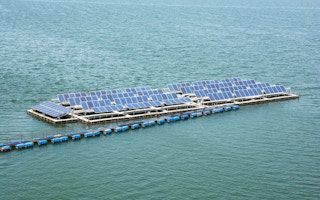As we brace for the impending impact of severe climate shifts, finding a sustainable path towards clean, alternative sources of energy is of utmost importance. A massive, historically unprecedented effort to abandon dirty, dangerous fossil fuels is needed to keep us all afloat. Whether our lives are centered in Asia or the Americas, rising tides and temperatures due to climate change pose a major threat.
To continue reading, subscribe to Eco‑Business.
There's something for everyone. We offer a range of subscription plans.
- Access our stories and receive our Insights Weekly newsletter with the free EB Member plan.
- Unlock unlimited access to our content and archive with EB Circle.
- Publish your content with EB Premium.
The shift to renewable energy sources, such as solar power, hydropower and wind does not have to impede other areas of economic development. Today in eighteen states throughout America, solar is the same price or cheaper than conventional carbon-based fuels. Solar PV costs have been dropping significantly in other areas of the world as well, positioning the technology for continued international success.
While solar energy has its undeniable benefits, it also presents a number of challenges. On a small scale, harvesting this energy involves putting solar panels on rooftops, but larger projects including solar farms require a substantial amount of land which can be hard to come by. Take Japan for example; an archipelago nation that simply doesn’t have the space for large, land-based solar projects.
Enter floatovoltaics, or floating solar technology.
Napa Valley’s Far Niente winery took the first plunge into floating solar panels back in 2008, pioneering the ingenious “floatovoltaic” concept. To avoid displacing land used to grow grapes, solar arrays are kept floating on nearby irrigation ponds. The water beneath these floatovoltaic systems has a dual function; both cleaning and cooling the PV panels while allowing them to lie perfectly flat without shade. Not only do these floating panels save valuable land space, they also help to conserve water by reducing evaporation - making floatovoltaic systems particularly attractive to arid, drought-stricken areas like California.
It may seem incongruous, but the solar panels lose efficiency as their temperature increases. Placing solar arrays on water absorbs excess heat, thereby increasing their energy output and efficiency levels by eight to 10 per cent. Even small, private bodies of water such as ponds are ideal as power generation sources, because they are typically unused for any other purpose and hidden from public view. In most cases, the owners of floatovoltaic systems are also able to get back a portion of their investment by selling excess power back to local energy providers. Additionally, because they are preventing direct sunlight from hitting the water, the growth of harmful algae blooms can be stopped without the use of dangerous chemicals.
Currently, the world’s largest floatovoltaics installation is underway in land-constrained Japan with completion planned for the first quarter of 2016. 50,000 solar panels will cover 18 hectares of the Yamakura dam reservoir, which will produce enough electricity for 5,000 homes. Putting floatovoltaics in a hydroelectric dam system is especially effective as it combines two methods of generating clean, renewable energy that compensate for each other’s weaknesses - the dam is vulnerable to drought conditions while the solar array is not, and the dam will keep working if a prolonged stretch of cloudy or rainy days keep the panels from collecting energy.
Many other countries including the UK, Italy, Australia, South Korea and Israel have also announced recent plans for their own large-scale floatovoltaics installations. The largest floatovoltaic installation in the United States, in Sonoma County, California will be completed next year and produce 12.5 megawatts of electricity capable of powering 3,000 homes.
Floatovoltaics could play a key role in upcoming efforts to curb greenhouse gas emissions by reducing our dependency on polluting fossil fuels for power generation. The icing on the cake is that they also aid in water conservation by reducing losses through evaporation, especially where drought conditions are exacerbated by the worsening effects of global warming. This technology also makes a “triple play” by taking advantage of otherwise underutilized resources and land space.
Solar power is an ever-rising percentage in most nations’ mix of energy sources. Given its benefits of cost, efficiency, scaleability, resource utilization and imperviousness to earthquakes, you can expect to read about an increasing number of floatovoltaics installations around the world in coming years.
Emma Bailey is a writer in the greater Chicago area who covers technology, entertainment, and business. This article was written exclusively for Eco-Business.











